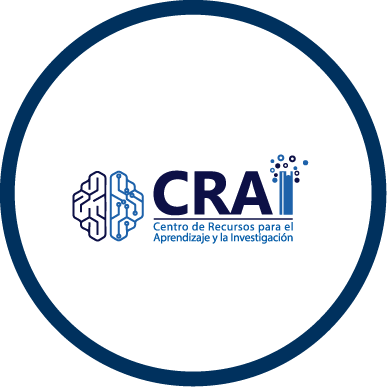Comparación Entre El Romero Y El Fipronil Como Antipulgas En Caninos En Bogotá
The use of flea repellents today has become necessary for the control of external parasites to which our pets are exposed every day, this is why there are different chemical products that help us fight these parasites, among which is fipronil which is a chemical compound derived from phenylpyrazolon...
Guardado en:
| Autores principales: | , |
|---|---|
| Otros Autores: | |
| Formato: | Tesis/Trabajo de grado - Monografía - Pregrado |
| Lenguaje: | Español |
| Publicado: |
Universidad Antonio Nariño
2025
|
| Materias: | |
| Acceso en línea: | https://repositorio.uan.edu.co/handle/123456789/12329 |
| Etiquetas: |
Agregar Etiqueta
Sin Etiquetas, Sea el primero en etiquetar este registro!
|
| _version_ | 1831062933676752896 |
|---|---|
| author | Riveros Reyes, Leidy Alejandra Ramírez Ospina, Laura Vannesa |
| author2 | Morales, Juan Carlos |
| author_facet | Morales, Juan Carlos Riveros Reyes, Leidy Alejandra Ramírez Ospina, Laura Vannesa |
| author_sort | Riveros Reyes, Leidy Alejandra |
| collection | DSpace |
| description | The use of flea repellents today has become necessary for the control of external parasites
to which our pets are exposed every day, this is why there are different chemical products that
help us fight these parasites, among which is fipronil which is a chemical compound derived
from phenylpyrazolone and its main function is to inhibit GABA receptors, on the other hand
there are also natural options that can help combat the problems of ectoparasites such as the
branches (leaf and stem) of rosemary, which is defined as an endemic plant in several countries,
and its mechanism of action against fleas is the alteration of chitin receptors preventing the
parasite's exoskeleton from forming correctly, for this reason, in order to clear up the unknown
of What is the best flea repellent? Between the two mentioned above, non-experimental
documentary research with qualitative characteristics was carried out, taking into account that
the review of text already described in previous research is essential to arrive at a comparison of
the effects of rosemary and fipronil on fleas with positive results, revealing the characteristics of
each product |
| format | Tesis/Trabajo de grado - Monografía - Pregrado |
| id | repositorio.uan.edu.co-123456789-12329 |
| institution | Repositorio Digital UAN |
| language | Español |
| publishDate | 2025 |
| publisher | Universidad Antonio Nariño |
| record_format | dspace |
| spelling | repositorio.uan.edu.co-123456789-123292025-02-13T15:00:46Z Comparación Entre El Romero Y El Fipronil Como Antipulgas En Caninos En Bogotá Riveros Reyes, Leidy Alejandra Ramírez Ospina, Laura Vannesa Morales, Juan Carlos Romero Fipronil Perros Reacciones alérgicas Antipulgas Rosemary Fipronil Dogs Allergic reactions Anti-fleas The use of flea repellents today has become necessary for the control of external parasites to which our pets are exposed every day, this is why there are different chemical products that help us fight these parasites, among which is fipronil which is a chemical compound derived from phenylpyrazolone and its main function is to inhibit GABA receptors, on the other hand there are also natural options that can help combat the problems of ectoparasites such as the branches (leaf and stem) of rosemary, which is defined as an endemic plant in several countries, and its mechanism of action against fleas is the alteration of chitin receptors preventing the parasite's exoskeleton from forming correctly, for this reason, in order to clear up the unknown of What is the best flea repellent? Between the two mentioned above, non-experimental documentary research with qualitative characteristics was carried out, taking into account that the review of text already described in previous research is essential to arrive at a comparison of the effects of rosemary and fipronil on fleas with positive results, revealing the characteristics of each product El uso de antipulgas hoy en día se ha vuelto necesario para el control de parásitos externos a los cuales nuestros animales de compañía se encuentran expuestos día a día, es por esto que existen diferentes productos químicos que nos ayudan a combatir estos parásitos, entre los cuales se encuentra el fipronil que es un compuesto químico derivado de la fenilpirazolona y su función principal es inhibir los receptores GABA, por otro lado también existen opciones naturales que pueden ayudar a combatir los problemas de los ectoparásitos como lo son las hojas del romero, que se define como una planta endémica en varios países, y su mecanismo de acción contra las pulgas es la alteración en la síntesis de quitina impidiendo que se forme correctamente el exoesqueleto del parásito, por esto mismo para llegar a despejar la incógnita de ¿Cuál es el mejor antipulgas? Entre los dos nombrados anteriormente lo cual se realizó una investigación documental no experimental con características cualitativas, teniendo en cuenta que la revisión de texto ya descritos en investigaciones anteriores son fundamentales para llegar a comparar los efectos del romero y del fipronil sobre las pulgas con unos resultados positivos dando a conocer las características de cada producto. final Médico(a) Veterinario(a) Pregrado Presencial Monografía 2025-02-13T15:00:46Z 2025-02-13T15:00:46Z 2024-11-08 2025-02-13 Tesis/Trabajo de grado - Monografía - Pregrado Estudio descriptivo info:eu-repo/semantics/acceptedVersion http://purl.org/coar/resource_type/c_46ec http://purl.org/redcol/resource_type/PIC http://purl.org/coar/version/c_b1a7d7d4d402bcce https://repositorio.uan.edu.co/handle/123456789/12329 Español https://repositorio.uan.edu.co/collections/05134aed-90f8-471b-8e8c-1b5d029882cd Attribution-NonCommercial-NoDerivs 2.5 Colombia http://creativecommons.org/licenses/by-nc-nd/2.5/co/ info:eu-repo/semantics/openAccess http://purl.org/coar/access_right/c_abf2 pdf application/pdf application/pdf application/pdf Universidad Antonio Nariño Medicina Veterinaria Facultad de Medicina Veterinaria Bogotá - Circunvalar instname:Universidad Antonio Nariño Aguilar Zapata, J. P. (2024). Evaluación de la eficacia in vitro del aceite esencial de romero (Rosmarinus officinalis) como control natural de pulgas en caninos domésticos (Canis lupus familiaris) [BachelorThesis]. https://repositorio.uta.edu.ec:8443/jspui/handle/123456789/42781 Ávila-Sosa, R., Navarro-Cruz, A. R., Vera-López, O., Dávila-Márquez, R. M., Melgoza-Palma, N., & Meza-Pluma, R. (2011). Romero (Rosmarinus officinalis L.): una revisión de sus usos no culinarios. Ciencia y mar, 15(43), 23-36. ASPCA. (n.d.). Toxic and non-toxic plants. https://www.aspca.org/pet-care/animal-poisoncontrol/toxic-and-non-toxic-plants Barbarroja-Escudero, J., Álvarez De Mon Soto, M., Antolín-Amérigo, D., & Sánchez-González, M. J. (2013). Reacciones alérgicas. Medicine - Programa de Formación Médica Continuada Acreditado, 11(29), 1769-1777. https://doi.org/10.1016/S0304-5412(13)70527-4 Bentosela, M. (2007). Comunicación entre perros domésticos (canis familiaris) y hombres. Bermúdez Mondragón, M. B., Pineda Salazar, H. Y., & Patarroyo Arenas, M. C. (2019). Análisis retrospectivo de enfermedades de piel de perros diagnosticadas por biopsia de 2010 a 2017 en la ciudad de Villavicencio – Meta. https://hdl.handle.net/20.500.12494/12369 Castro-Janer, E., Martins, J. R., Mendes, M. C., Namindome, A., Klafke, G. M., & Schumaker, T. T. S. (2010). Diagnoses of fipronil resistance in Brazilian cattle ticks (Rhipicephalus (Boophilus) microplus) using in vitro larval bioassays. Veterinary Parasitology, 173(3), 300–306. https://doi.org/10.1016/j.vetpar.2010.06.036 Castro, L., Martinez, E., &. Ramirez, H. (2016). Efectos Terapéuticos del Ajo (Allium Sativum). https://www.unsis.edu.mx/revista/doc/vol3num8/A4_Efectos_Terapeuticos_Ajo.pdf Cepeda Moreno, C. V., Fandiño Pineda, L. J., Ladino Aguirre, L. S., & Rubiano Pardo, A. F. (2021). Elaboración de un plan de negocios de una empresa dedicada a la producción de tratamientos para el control de pulgas a base de extractos naturales como Allium sativum, Chenopodium ambrosioides, Rosmarinus officinalis. instname:Universidad Antonio Nariño. http://repositorio.uan.edu.co/handle/123456789/5125 Cervantes, E. (2009). Micoplasmas patógenos para el humano. Revista de la Facultad de Medicina UNAM, 52(6), 253–259. https://www.medigraphic.com/cgibin/new/resumen.cgi?IDARTICULO=22713&id2= |
| spellingShingle | Romero Fipronil Perros Reacciones alérgicas Antipulgas Rosemary Fipronil Dogs Allergic reactions Anti-fleas Riveros Reyes, Leidy Alejandra Ramírez Ospina, Laura Vannesa Comparación Entre El Romero Y El Fipronil Como Antipulgas En Caninos En Bogotá |
| title | Comparación Entre El Romero Y El Fipronil Como Antipulgas En Caninos En Bogotá |
| title_full | Comparación Entre El Romero Y El Fipronil Como Antipulgas En Caninos En Bogotá |
| title_fullStr | Comparación Entre El Romero Y El Fipronil Como Antipulgas En Caninos En Bogotá |
| title_full_unstemmed | Comparación Entre El Romero Y El Fipronil Como Antipulgas En Caninos En Bogotá |
| title_short | Comparación Entre El Romero Y El Fipronil Como Antipulgas En Caninos En Bogotá |
| title_sort | comparacion entre el romero y el fipronil como antipulgas en caninos en bogota |
| topic | Romero Fipronil Perros Reacciones alérgicas Antipulgas Rosemary Fipronil Dogs Allergic reactions Anti-fleas |
| url | https://repositorio.uan.edu.co/handle/123456789/12329 |
| work_keys_str_mv | AT riverosreyesleidyalejandra comparacionentreelromeroyelfipronilcomoantipulgasencaninosenbogota AT ramirezospinalauravannesa comparacionentreelromeroyelfipronilcomoantipulgasencaninosenbogota |




